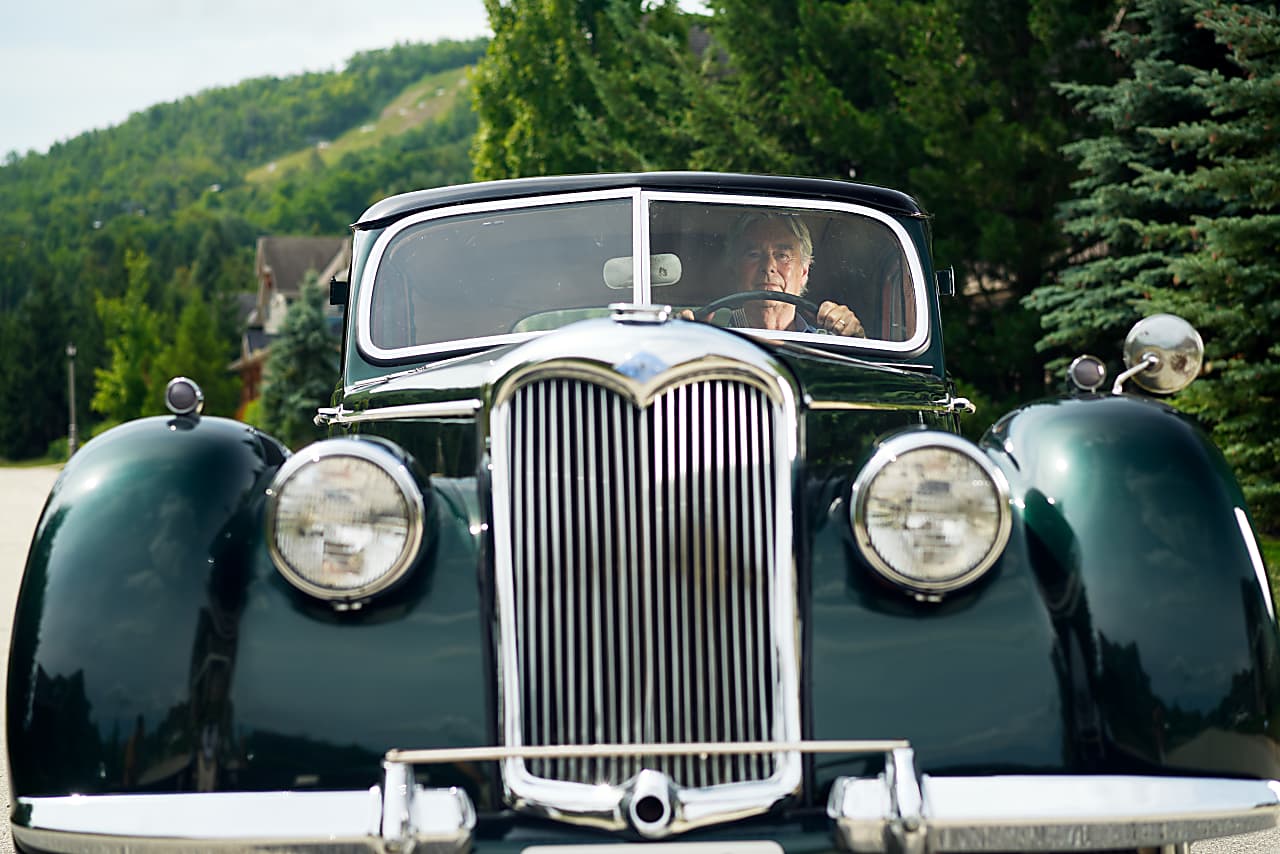
HIS POSTWAR SEDAN HAS OUTLASTED ITS MAKER AND MANY CANADIAN WINTERS
Cam Richardson, 70, a retired small-business owner living in Toronto, on his 1949 Riley 2½ Litre RM sedan, as told to A.J. Baime.
My father had a 1950 Jaguar XK 120 sports car, but when he and my mother decided to marry, they needed more practical transportation. My father loved British cars, so, in 1951, he bought a 1949 Riley sedan. My parents were married on Oct. 18, 1952, and, the next morning, they departed for their honeymoon on a 1,500-mile road trip in the Riley. They left Toronto and drove through Montreal to Boston, on to New York, and back via Buffalo to their new home in Toronto.
In 1954, when I was born, I was shepherded back from the hospital in the Riley. Two of my siblings also came home from the hospital in this sedan. From then on, the Riley was the main form of transportation for the family. This was our daily driver, for many of my years growing up.
Riley was based in Coventry, England. During the war, Riley became involved in building for the military, and when this Riley was built in 1949, it was among the first wave of postwar cars made in England. People think it looks like an old, prewar Bentley.
In the middle of winter in Toronto in the 1950s and early ’60s, having a British car was challenging. Passengers had blankets wrapped around them. The front seat had a small heater fed by radiator hoses that almost kept the driver warm. In some cases, my parents had to pour boiling water over the engine to get it started on cold mornings.
I recall, as a 5-year-old, getting a ride on a winter day from a neighbor in a Chevrolet and noticing how warm it was. I lobbied my parents to get rid of the Riley and buy a Chevy, but my pleas fell on deaf ears—which turned out to be a good thing.
By 1964, expansion led our family to a series of station wagons and the Riley was garaged, with around 200,000 miles on it. In the 1980s, my father began a restoration. The roof was rotting and was replaced. The engine needed an overhaul, which my father did in the basement of our house. He had body panels repaired and chrome pieces replated. At that point, the car was put in storage until 1997, when I acquired it from my father.
I had the car painted a beautiful Moss Green, the color it remains today. It became my daily driver, during fair weather, for around four years in the early 2000s. The car has its original 2½-liter four-cylinder engine. It feels like driving a tank. You sit up high and it starts out slow. But once you get it going it’s as smooth as silk.
These days, I drive the car mostly in the fall, so the Riley’s driving season is now approaching. There are a lot of quaint places north of Toronto, and everyone stares at this car. The Riley brand disappeared in the 1960s, so few people have heard of it. It looks very British, there’s no doubt about that.
This Riley has been in the family for 73 years—for all of my life and then some. The interior is mostly original—much as it was when I came home from the maternity ward in my mother’s arms.
Write to A.J. Baime at [email protected].
2024-09-01T12:09:01Z dg43tfdfdgfd